WK 3 - wk 3 summary PDF

| Title | WK 3 - wk 3 summary |
|---|---|
| Course | Criminal Law And Process B |
| Institution | University of Wollongong |
| Pages | 5 |
| File Size | 193.7 KB |
| File Type | |
| Total Downloads | 89 |
| Total Views | 201 |
Summary
wk 3 summary...
Description
WEEK 3 – INTERPRETING STATUTORY OFFENCES
3 TYPES OF OFFENCES: 1. 2.
3.
Offence of MR Subjective MR element (e.g. Intent, knowledge, recklessness) Strict Liability No MR, but D can raise HRMF defence in cases of strict liability In order to find an offence one of strict liability must displace the presumption of MR Absolute Liability P does not have to prove anything regarding D’s mental state, no HRMF, but often statutory defence
What’s the MR? CORRESPONDING MR WITH AR AND IF STRICT LIABILITY WILL BE PRESUMED AR Conduct (Act or Omission)
Circumstance (external factor that makes the act criminal, eg doing something without consent)
Consequence (act or omission cause an outcome, eg occasioning GBH, polluting a waterway)
Usual MR element
Intent
Knowledge, Recklessness or Negligence
Intention, Recklessness or Negligence
Can this element be strict liability?
No, strong presumption that acts must be intentional
Yes, most common element to be strict liability
Yes, but far less common than for circumstance
Circumstance element is the most important for liability of an offence.
PRESUMPTION OF MR There is a presumption in criminal law that a guilty mind is an essential part of any crime even where the legislation is silent as to the MR The presumption may, however, be displaced; use test in HKT 1. Words of the statute: will use either express words (‘knowingly’, ‘recklessly’) or necessary implication 2. Subject matter with which the stature deals If the criminal law provision is more regulatory and/or has smaller fines, it will lean to SL If it is more like a ‘real crime’ (something that would carry moral condemnation if you were convicted of it) and has a more serious penalty, it will lean towards a more MR element. 3. Utility of imposing strict liability About whether it would encourage people to take more proactive steps to be more careful and prevent the behaviour from happening important to think about if someone can avoid committing the act But when the MR cannot be rebutted, the standard of MR needs to be determined.
Strict Liability and the HRMF defence
Statutory offence are sometimes clear to the MR (eg Murder = reckless indifference to human life, or with intention to kill or inflict GBH upon a person), but they are sometimes silent to the MR P must prove D performed AR but does not have to prove MR
BURDEN OF PROOF: D may raise some evidence (CTM) of HRMF to exculpate him/herself From Proudman v Dayman the liability defence is explained as Dixon J stated “as a general rule an honest and reasonable belief in a state of facts, which, if they existed, would make the defendant’s act innocent affords an excuse for doing what would otherwise be an offence” The accused is arguing HRMF (honest and reasonable mistake of fact excuse) What needs to be proved for HRMF? 1.
2.
3.
D had an honest belief (usually affirmative belief) in a particular state of affairs a. The belief must make the mistake innocent b. Must be genuine Constitutes a mistake of fact (not law) a. What does ‘mistake’ mean? (SRA v Hunter District Water Board) b. SRA v HDWB: To determine where there was a sufficient mistake: i. A positive belief that the act was permissible will constitute HRMF ii. A Mere absence of a reason to believe that the facts were otherwise will not constitute HRMF this is because the purpose of this law is to put more responsibility on people to be active and try to do the right thing, not hide behind their own ignorance. iii. The failure to consider whether the facts were otherwise will not constitute a HRMF c. Ostrowski v Palmer: Mistake of Fact: The accused’s’ mistake was a mistake of law, he was unaware of the regulation rendering his unlawful fishing one of strict liability, “he had a commercial fishing license...he knew where he as fishing...what he did not know was that there was a regulation prohibiting his conduct...he did not know there was a law against it” [CB 226]. Not enough for HRMF as the accused made a mistake of law This mistake was reasonable a. objective test – according to the reasonable, ordinary, everyday person
D has the evidentiary burden to raise some evidence of the issue. If D successfully raises evidence, P bears the onus of disproving HRMF BRD Strict liability is analysed in relation to: 1. the burden of proof 2. the requirement that the mistake must be one of “fact” 3. the requirement that the fact, if it had actually been present, would have made the defendant’s act “innocent”
SL OFFENCES CAN BE FOUND IN THE FOLLOWING AREAS OF LAW (MORE REGULATORY): corporate and prudential regulation; environmental protection; work health and safety laws; customs and border protection legislation; Copyright law etc. EXAMPLES OF SL OFFENCES: Riding on public transport without paying fare Unlawfully taking undersized crayfish Causing pollution in waterways (relates to consequence) Driving in excess of the speed limit Harming or desecrating Aboriginal objects or places
REASONS WE HAVE SL OFFENCES:
Aid enforcement of the law Put people/ corporations on notice Encourage prudence; taking of preventative steps Senate Scrutiny of Bills Committee, Application of Absolute and Strict Liability Offences in Commonwealth Legislation (2002): where it is difficult to prosecute fault provisions – particularly intent to overcome ‘knowledge of law’ issues, where a physical element incorporates a reference to a legislative provision; where it is necessary to protect the general revenue; or to ensure the integrity of a regulatory regime (for example, public health, the environment, financial or corporate regulation).
QUESTIONS AND ISSUES Are any or all of these valid reasons for abrogating ‘a hallmark of our criminal justice system’? What are the issues/ concerns with SL offences? (HKT, per Brennan J). By taking away the MR, we’re undemeaning the core principle of the criminal law system We risk over-criminalisation Makes it much easier to prosecute Quite easy to put a penalty notice in What do SL offences tell us about the difference between ‘law on the books’ and law in practice? …
Absolute Liability Offences 1. 2. 3.
Rare Clear intention - clear expression by Legislature Can often raise a statutory defence
P only has to prove D performed the AR No opportunity for D to raise argument of HRMF NB. Such offences are rare and often allow for a statutory defence o Where statutory defence, D has to prove the defence on balance of probabilities (higher than ‘raise some evidence of the issues’ with HRMF)
EXAMPLES OF AL OFFENCES: Selling liquor to minors Refusing to submit to a breath test
HRMF defence is very narrow- fisherman case
Spring 2019 LLB 180 / LLB1180 Criminal Law and Procedure B Topic 1 Statutory Interpretation and Strict Liability Offences - Seminar Question The primary object of the Companion Animals Act 1998 (NSW) is set out in s 3A as: ‘to provide for the effective and responsible care and management of companion animals’. One aspect of the regulatory regime is restrictions on breeds of dogs that are regarded as aggressive and therefore a risk to people and other animals. Consider the following offence: 57A Prohibition on selling restricted dogs A person who sells, or advertises the sale of, a restricted dog is guilty of an offence. Maximum penalty: 150 penalty units. Note. The term “sell” extends to the transfer of owner by any means, including by gift. Section 55(1) of the Companion Animals Act 1998 (NSW) states: (1) The following dogs are restricted dogs for the purposes of this Act: (a) (b) (c) (d)
American pit bull terrier or pit bull terrier, Japanese tosa, dogo Argentino, fila Brasileiro, (d1)any other dog of a breed, kind or description whose importation into Australia is prohibited by or under the Customs Act 1901 of the Commonwealth, (e) any dog declared by an authorised officer of a council under Division 6 of this Part to be a restricted dog, (f) any other dog of a breed, kind or description prescribed by the regulations for the purposes of this section. Instructions Identify the actus reus and mens rea for an offence under s 57A of the Companion Animals Act 1998 (NSW). Support your analysis with reference to the decision in He Kaw Teh (1985) 157 CLR 523.
AR
Conduct: Person sells or advertises dog
Circumstance: restricted dog
MR
Intent- presumption of intent- brennan in hkt
n/a
Consequence: n/a
SL
Yes...
Similar Free PDFs

WK 3 - wk 3 summary
- 5 Pages
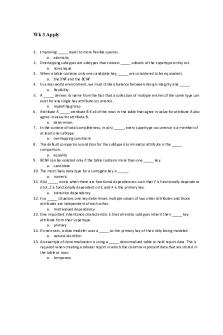
Wk 3 Apply - Assingment
- 3 Pages
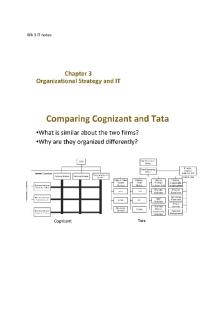
Wk 3 notes MBA 610
- 13 Pages
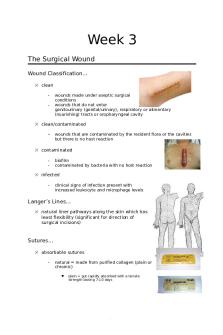
Wound Care Notes Wk 3
- 14 Pages
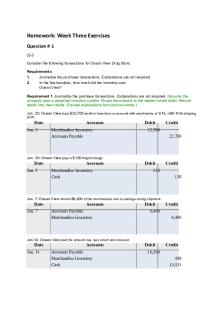
WK 3 Assignment 1 - ggjg
- 29 Pages

Auditing Case 3 Wk 3 - Grade: A+
- 4 Pages
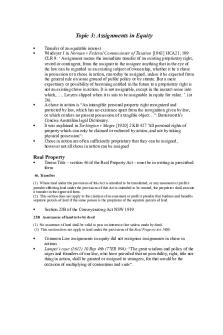
Wk 3 Assignments in Equity
- 6 Pages

Summary WEEK 1 - wk 1
- 6 Pages

Edapt WK 3 Metabolism AND Nutrition
- 65 Pages

3 Day Diet Analysis Wk Sheet
- 11 Pages

Zeitstrahl - 1. WK bis 2. WK
- 1 Pages

Dosage Calculations wk 3 PN I
- 2 Pages
Popular Institutions
- Tinajero National High School - Annex
- Politeknik Caltex Riau
- Yokohama City University
- SGT University
- University of Al-Qadisiyah
- Divine Word College of Vigan
- Techniek College Rotterdam
- Universidade de Santiago
- Universiti Teknologi MARA Cawangan Johor Kampus Pasir Gudang
- Poltekkes Kemenkes Yogyakarta
- Baguio City National High School
- Colegio san marcos
- preparatoria uno
- Centro de Bachillerato Tecnológico Industrial y de Servicios No. 107
- Dalian Maritime University
- Quang Trung Secondary School
- Colegio Tecnológico en Informática
- Corporación Regional de Educación Superior
- Grupo CEDVA
- Dar Al Uloom University
- Centro de Estudios Preuniversitarios de la Universidad Nacional de Ingeniería
- 上智大学
- Aakash International School, Nuna Majara
- San Felipe Neri Catholic School
- Kang Chiao International School - New Taipei City
- Misamis Occidental National High School
- Institución Educativa Escuela Normal Juan Ladrilleros
- Kolehiyo ng Pantukan
- Batanes State College
- Instituto Continental
- Sekolah Menengah Kejuruan Kesehatan Kaltara (Tarakan)
- Colegio de La Inmaculada Concepcion - Cebu



